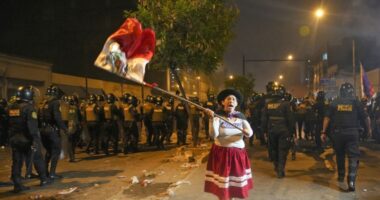
But what they found instead were newcomers, mostly from the city, who wanted a storybook version of a farm, minus the manure and the noise, and one that fit within their own agendas and schedules, Ms. Morley said. Many of them suggested a “trial one-year run” — an impossibly short time frame for a business like theirs — and seemed to have a scant appreciation of the sights, sounds and smells of farming.
“A good pasture-based livestock operation doesn’t look like a well-mowed lawn, and that was a sticking point for many landowners we spoke to,” Ms. Morley said. “Or we would hear, ‘I want to see goats out on the pasture.’ But the thing is, it’s hard to make money raising goats.” One location they visited included a barn that the owner suggested could be used for both housing animals and holding wedding receptions, depending on the season.
Sophie Ackoff, an executive director of the National Young Farmers Coalition, a nonprofit that supports the interests of beginning farmers, is no stranger to the issue. “We’ve seen a surge in interest from non-farmer buyers in the Hudson Valley,” she said, adding that such bidders often have a buyer’s advantage over farmers just starting out. That includes access to speedier loan options, whereas beginning farmers largely rely on slow-moving loans through the United States Department of Agriculture.
Access to affordable farmland is a major challenge nationally, particularly for people of color, who today make up 2 percent of farmland owners. To address this, the coalition has started the One Million Acres for the Future campaign, which calls for Congress to invest $2.5 billion in the 2023 Farm Bill to facilitate equitable access to land.
According to Holly Rippon-Butler, the land campaign director for the coalition, farmland near cities is especially desirable for small livestock operations and fruit and vegetable growers, because of the greenmarkets and farm-to-table restaurants nearby. Competition is the worst in “places where there’s a lot of money and the agricultural land is high quality and aesthetically attractive.”
The Hudson Valley tops her list of regions where beginning farmers have the hardest time getting toeholds, along with the outskirts of Atlanta and Austin, Texas, the Bay Area in California and parts of Washington State.
Source: | This article originally belongs to Nytimes.com









